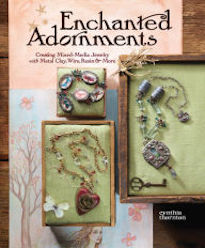 Yesterday, the Botanical Society of Westmoreland County had a field trip to the Third Bridge Wetlands near Latrobe. It was the first field trip that I've gone on with them. It was a lot of fun and highly educational. So often are the impressions of a field or plot of nature felt in gestures and over-all impressions... but it's like a tapestry, woven of countless species and specimens. We (mostly them) identified several of the plants along the overgrown trail.
Yesterday, the Botanical Society of Westmoreland County had a field trip to the Third Bridge Wetlands near Latrobe. It was the first field trip that I've gone on with them. It was a lot of fun and highly educational. So often are the impressions of a field or plot of nature felt in gestures and over-all impressions... but it's like a tapestry, woven of countless species and specimens. We (mostly them) identified several of the plants along the overgrown trail. Below are just a few of the ones we saw:
 Above is the common sneezeweed. It's also knowns as "Helenium autumnale" and "swamp daisy". When the identification of the bright yellow flower was made, I was a bit leery of the plant. "Sneezeweed" has a sinister ring to it for people with allergies. I later found out that it derives its name for a snuff that was made out of the leaves, used to induce sneezing to rid the body of evil spirits and aliments.
Above is the common sneezeweed. It's also knowns as "Helenium autumnale" and "swamp daisy". When the identification of the bright yellow flower was made, I was a bit leery of the plant. "Sneezeweed" has a sinister ring to it for people with allergies. I later found out that it derives its name for a snuff that was made out of the leaves, used to induce sneezing to rid the body of evil spirits and aliments.
 Some plants eluded identification, like the one shown to the left. No one was quite sure what to make of these spiky balls.
Some plants eluded identification, like the one shown to the left. No one was quite sure what to make of these spiky balls.
 We didn't see just plants. There were loads of butterflies and dragonflies. The image to the left shows several butterflies feasting on the nectar of thistle blossoms. In the center is what looks to be an empty starling nest found in an old duck-shoot overlooking one of the ponds. To the right is a "zipper spider" also known as the "Argiope Spider" and more commonly, the "banana spider". They are easily identifiable with their large, yellow and black bodies and the thick zigzagging zipper shape woven into their web.
We didn't see just plants. There were loads of butterflies and dragonflies. The image to the left shows several butterflies feasting on the nectar of thistle blossoms. In the center is what looks to be an empty starling nest found in an old duck-shoot overlooking one of the ponds. To the right is a "zipper spider" also known as the "Argiope Spider" and more commonly, the "banana spider". They are easily identifiable with their large, yellow and black bodies and the thick zigzagging zipper shape woven into their web.
 Above is the common sneezeweed. It's also knowns as "Helenium autumnale" and "swamp daisy". When the identification of the bright yellow flower was made, I was a bit leery of the plant. "Sneezeweed" has a sinister ring to it for people with allergies. I later found out that it derives its name for a snuff that was made out of the leaves, used to induce sneezing to rid the body of evil spirits and aliments.
Above is the common sneezeweed. It's also knowns as "Helenium autumnale" and "swamp daisy". When the identification of the bright yellow flower was made, I was a bit leery of the plant. "Sneezeweed" has a sinister ring to it for people with allergies. I later found out that it derives its name for a snuff that was made out of the leaves, used to induce sneezing to rid the body of evil spirits and aliments.The pale blue flower, shown above, is called the common chicory or "root chicory". The roots can be baked and ground and used as a coffee substitute. I'm a staunch coffee drinker, but have had some delicious coffee substitutes made from chicory, toasted almonds, carob and dates with a hint of vanilla.
 Some plants eluded identification, like the one shown to the left. No one was quite sure what to make of these spiky balls.
Some plants eluded identification, like the one shown to the left. No one was quite sure what to make of these spiky balls. Of course, there were plants, like the one shown in the middle with ample identifications. The one in the middle is known as Pennsylvania Smartweed. Some of its common names are "pinkweed" and "pink knotweed".
The spiky plant on the right is called teasel or "Dipsacus". The combs of this plant were once used in textile production before the introduction of metal cards.
 We didn't see just plants. There were loads of butterflies and dragonflies. The image to the left shows several butterflies feasting on the nectar of thistle blossoms. In the center is what looks to be an empty starling nest found in an old duck-shoot overlooking one of the ponds. To the right is a "zipper spider" also known as the "Argiope Spider" and more commonly, the "banana spider". They are easily identifiable with their large, yellow and black bodies and the thick zigzagging zipper shape woven into their web.
We didn't see just plants. There were loads of butterflies and dragonflies. The image to the left shows several butterflies feasting on the nectar of thistle blossoms. In the center is what looks to be an empty starling nest found in an old duck-shoot overlooking one of the ponds. To the right is a "zipper spider" also known as the "Argiope Spider" and more commonly, the "banana spider". They are easily identifiable with their large, yellow and black bodies and the thick zigzagging zipper shape woven into their web.The field trip was a lot of fun and I'm looking forward to the upcoming ones!


















5 comments:
Aay-the wetlands are so sumptuous looking! Such great photos~ I really like the butterflies/nest/spider. ;) More inspiration from nature! thank you!!
It was a lot of fun and highly educational. I learned a lot and will carry that with me for a very long time. I'm really looking forward to the trip to the bog the day after my birthday!!!
I like this a LOT! Are you channeling my mom? She would have gone on this in a New York minute!!! She knew all about plants. One of favorite things was to go up to Vermont and go "ferning" with her best friend and her former pediatrician when she was a little girl. He was my pediatrician too. He loved ferns! They would come back with all sorts. I have some in my yard, still.
I think the in identified spikey ball is carex grayii. If not that one it is a type of carex
The in identified plant should be a type of carex, looks like carex.grayii
Post a Comment